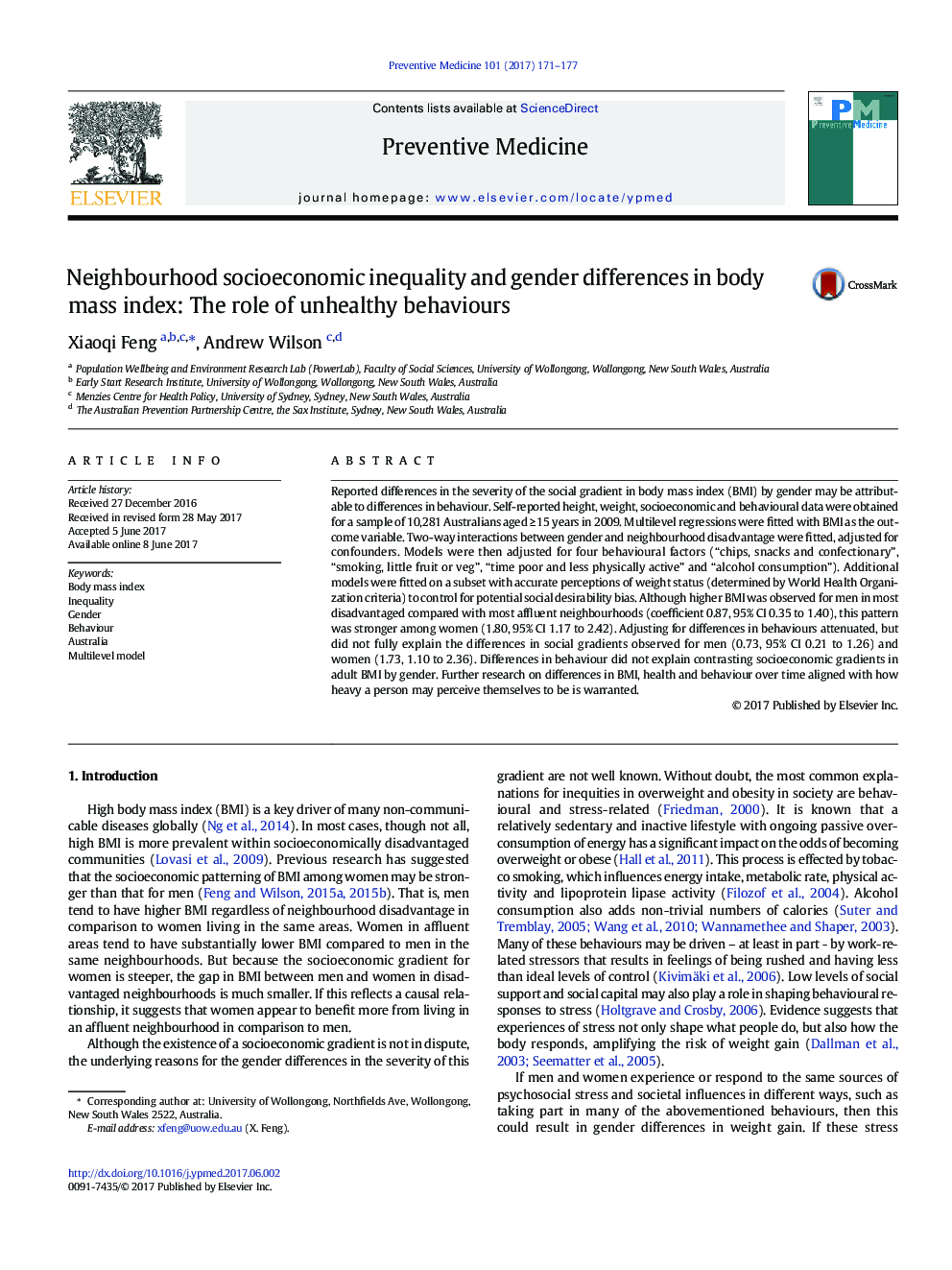| کد مقاله | کد نشریه | سال انتشار | مقاله انگلیسی | نسخه تمام متن |
|---|---|---|---|---|
| 5635530 | 1581613 | 2017 | 7 صفحه PDF | دانلود رایگان |
- Higher body mass index (BMI) was observed in more disadvantaged neighbourhoods.
- This pattern was stronger among women compared with men.
- Adjusting for behaviours did not fully explain these differences.
- Perceived weight status may modify the social gradient in BMI.
Reported differences in the severity of the social gradient in body mass index (BMI) by gender may be attributable to differences in behaviour. Self-reported height, weight, socioeconomic and behavioural data were obtained for a sample of 10,281 Australians aged â¥Â 15 years in 2009. Multilevel regressions were fitted with BMI as the outcome variable. Two-way interactions between gender and neighbourhood disadvantage were fitted, adjusted for confounders. Models were then adjusted for four behavioural factors (“chips, snacks and confectionary”, “smoking, little fruit or veg”, “time poor and less physically active” and “alcohol consumption”). Additional models were fitted on a subset with accurate perceptions of weight status (determined by World Health Organization criteria) to control for potential social desirability bias. Although higher BMI was observed for men in most disadvantaged compared with most affluent neighbourhoods (coefficient 0.87, 95% CI 0.35 to 1.40), this pattern was stronger among women (1.80, 95% CI 1.17 to 2.42). Adjusting for differences in behaviours attenuated, but did not fully explain the differences in social gradients observed for men (0.73, 95% CI 0.21 to 1.26) and women (1.73, 1.10 to 2.36). Differences in behaviour did not explain contrasting socioeconomic gradients in adult BMI by gender. Further research on differences in BMI, health and behaviour over time aligned with how heavy a person may perceive themselves to be is warranted.
Journal: Preventive Medicine - Volume 101, August 2017, Pages 171-177
